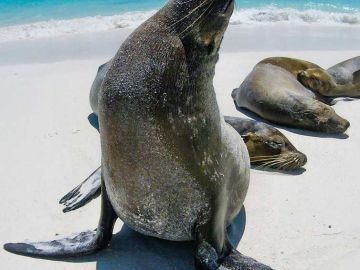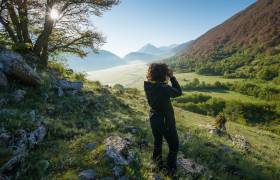The Galapagos Islands are best known for the distinctive wildlife found on their shores, and the impact animals such as the Galapagos Tortoise and Galapagos Finches had on Charles Darwin’s theory of evolution. Significantly less discussed are the remarkable wonders to be found in the surrounding waters.
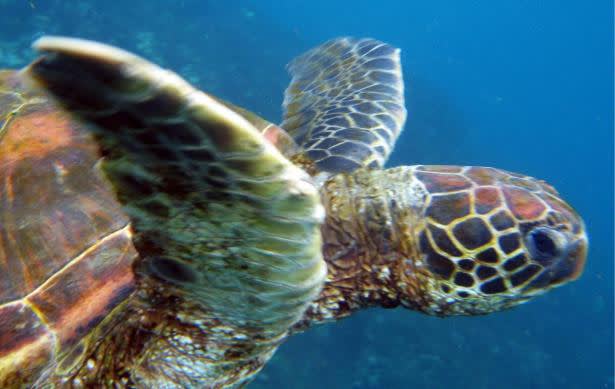
The Galapagos Islands are blessed with extraordinary marine biodiversity thanks to their location on the Equator, about 560 miles west of Ecuador. Nutrient-rich water runs off from the rain forests of Papua New Guinea, travels east across the Pacific Ocean (known as the Cromwell Current), and is churned up by the warm California current from the north and the cooling Peru (or Humbodlt) Current from the south.
The upwelling of deep water to the surface caused by this current collision brings with it nutrients that stimulate the growth of algae, or phytoplankton, which are the base of the ocean’s food chain. When they flourish, so does the area’s marine life. And since many of the volcanic islands do not offer enough nutrients on land, some of the Galapagos’ most intriguing species have adapted to live off the bounty to be found in its waters.
Here are four favorites you’re fairly likely to see while snorkeling the Galapagos:
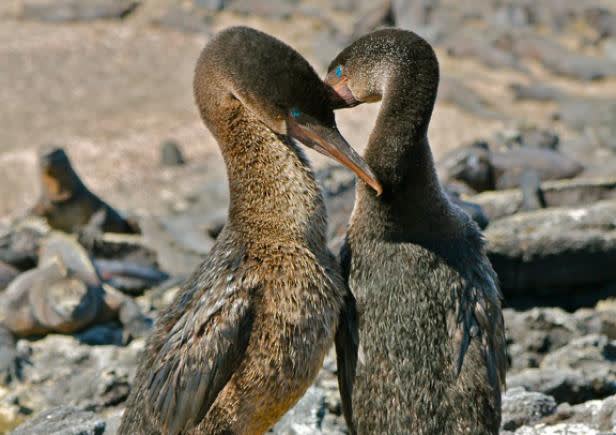
Flightless Cormorants
The Flightless Cormorant is among the most rare bird species in the world, with around 900 individuals living on the Galapagos Islands in 2009.
It’s an odd bird, with black and brown feathers, turquoise eyes, low growling voices, and wings about 1/3 the size that would be required in order for the bird to fly. Their feathers aren’t waterproof, so they spend a lot of time drying their short, stubby appendages in the sun.
But while they may not be able to fly, in the water they’re like feathered rockets, using their webbed feet and powerful legs to dive down to the bottom of the ocean in search of fish, eels and other small prey. Seeing a bird feeding on the ocean floor below you is a sight you won’t soon forget.
Their mating dance is an elegant aquatic waltz, with the male and female shaking their heads dramatically while circling one another as other suitors try to cut in. Later they build a seaweed nest above the high-tide mark, with the male bringing his lady friend gifts of flotsam from the ocean. She’ll lay 3 eggs, with only one likely to survive, and they share parenting responsibilities until the chick leaves the nest.
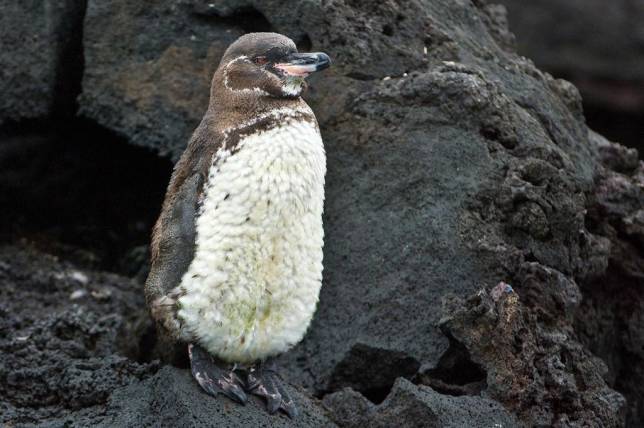
Galapagos Penguins
The Galapagos may be the only place in the world you can snorkel with penguins, and the Galapagos Penguin is the only penguin known to live north of the equator. They’re also extremely rare and endangered, with less than 1,000 breeding pairs left.
Found primarily on the western islands of Fernandina and Isabela, the tiny Galapagos Penguin measures just 19 inches long and weighs around five pounds, making them the second smallest penguin species in the world. Scientists have surmised that their Antarctic ancestors got caught in the Humboldt Current and wound up in the Galapagos, where they genetically adapted to the heat (which ranges from 59º-82ºF).
They cool themselves off via thermoregulation, stretching out their flippers, hunching forward to keep the sun from shining on their feet, and panting to cool themselves. They can typically be found right by the water, relishing frequent dips in the surprisingly cold water.
Snorkeling with them is a once-in-a-lifetime experience, as they dive and dart through the waves like tiny torpedoes while hunting the schooling fish that make up the bulk of their diet.
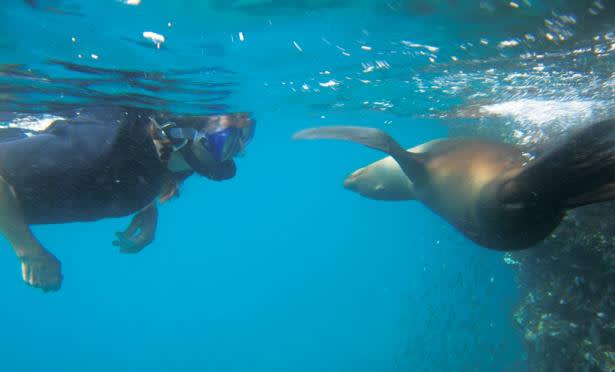
Galapagos Sea Lions
These sea lions may officially be on the IUCN endangered species list, but they’re ubiquitous in the Galapagos. You can find them almost everywhere– in public parks, on the San Cristobal docks, and on every beach of every island.
Distinguishable from fur seals by their earflaps, Galapagos Sea Lions seem awkward and clumsy on land, with a lurching side-to-side gait, loud barks and an array of odd bodily noises. But once they reach the water, they transform into something magical, like elegant ballet dancers of the oceanic world.
They also prove eminently playful and curious, swimming fast as lightning and ignoring the rule of keeping six feet of distance from all Galapagos wildlife. With their huge eyes, cute faces and funny flippers, the sea lions’ charms prove impossible to resist.
Española Island’s beautiful Gardner Bay is a special place to wind down a Galapagos adventure. Here, on a white sandy beach, hundreds of sea lions live in large colonies. Pups nurse from their mothers, juveniles frolic in the cerulean blue surf, and male bulls battle for dominance over their harems.
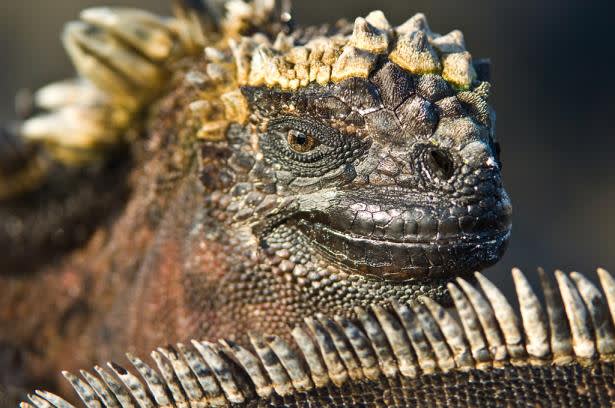
Marine Iguanas
Marine iguanas look like little miniature Godzillas, hissing and sneezing (in order to expel excess salt from their nasal glands) and tending to clutter en masse like kittens.
Marine Iguanas can be found almost everywhere in the Galapagos, but they love congregating on the lava-strewn shores, where they can rapidly absorb heat from the sun to warm their bodies after a swim. They vary greatly from island to island in terms of size and color, from the teal green-tinged adult males on Española to the brick red colors of the subspecies on Fernandina.
On land they appear graceless and clumsy, but their flattened tails and spiky dorsal fins make them a wonder to behold in the water. It’s bizarre to be snorkeling and see a 4-foot long lizard feeding on algae 25 feet below you, then shimmying their prehistoric-looking bodies to swim to the surface for air.
But their crusty cuteness and their puppy-like penchant for being constantly underfoot ultimately proves endearing.
